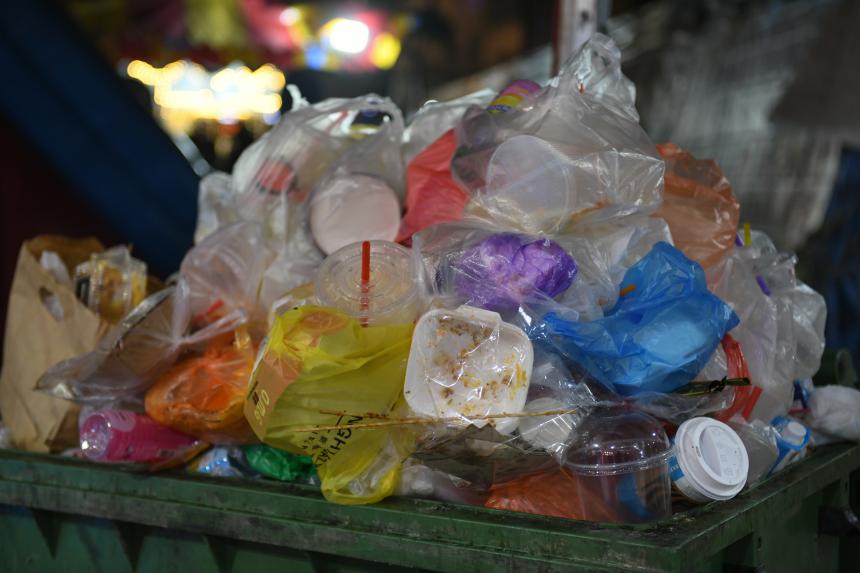SINGAPORE – To better manage packaging waste in Singapore, a study will be conducted to determine the feasibility of a scheme where companies are held responsible for the collection and treatment of their used packaging.
According to the National Environment Agency (NEA), about 60 per cent of packaging waste in 2022 was plastic, while 30 per cent was paper. The remaining 10 per cent was made up of other types of packaging materials, such as metal and glass.
To reduce the volume of waste sent to Semakau Landfill, NEA will be implementing the extended producer responsibility (EPR) approach for packaging waste management, starting with a beverage container return scheme on April 1, 2025.
When this kicks off, a refundable deposit of 10 cents will be added to the price of all drinks pre-packed in plastic bottles and metal cans, ranging in volume from 150ml to 3 litres.
The deposit will be refunded to consumers when the empty containers are returned at designated points.
NEA is also exploring the feasibility of extending the EPR scheme to broader types of packaging waste, such as plastic, as it makes up about a third of domestic waste disposed in Singapore.
According to tender documents seen by The Straits Times, the EPR’s goal is to create a “cost-effective, efficient and practical collection and recycling system” for packaging waste, taking into consideration the local waste management landscape.
The EPR system must also increase the collection and recycling rate of packaging waste, such as that arising from e-commerce activities by local and overseas producers.
The scheme should also incentivise producers, which include manufacturers and importers, to develop and use sustainable forms of packaging and cut the amount of packaging waste they create.
Since 2022, companies under the Mandatory Packaging Reporting (MPR) scheme must report their packaging data and their 3R (reduce, reuse, recycle) plans to NEA annually.
They include, for instance, using packaging materials made from recycled content or reducing the overall weight of packaging in their products.
The data submitted will be used in the study and help develop the EPR scheme, said NEA.
Overseas best practices will be identified and reviewed for their suitability in Singapore, including looking at emerging trends relevant to EPR take-back schemes for packaging waste.
Examples include mandating that packaging materials to be made from a minimum amount of recycled content, mandatory labelling requirements and the use of plastic credits. With such credits, companies can offset their plastic footprint by investing in plastic waste collection activities or projects to develop or improve their plastic recycling infrastructure.
Dr Swati Sharma, who lectures at Nanyang Technological University’s School of Social Sciences and teaches a module in environmental sustainability, noted that collecting back packaging waste at the post-consumer stage is always challenging.
This is because producers will not only have to pay for collection, treatment and recycling, but also run public awareness campaigns and offer incentives to get consumers to return used packaging. Moreover, some consumers may find it inconvenient to make multiple trips to collection points to return their packaging waste.
“Singapore imports most of its daily needs items, and many items, such as fruits and vegetables, are sold in excessive packaging in supermarkets.
“While packaging helps to ensure hygiene, avoid cross-contamination and ensure freshness, these cannot be reasons for not taking the steps needed to reduce packaging waste,” she said.
Having the EPR scheme will encourage companies to be innovative, use less packaging and ensure that their packaging can easily be recycled, Dr Sharma added.
As it may be challenging for one producer to set up its own recycling infrastructure, it may be more viable for producers to pay the Government to take care of the entire process, from collection to recycling.
Another approach is for the different producers to finance a company or organisation to manage waste and recycling operations, she said.
In the case of the beverage container return scheme, a scheme operator will be appointed and paid by beverage producers to collect and recycle empty containers on their behalf, according to NEA’s website.
Mr Lim Wen Bin, a KPMG partner handling infrastructure advisory here, said Singapore’s reliance on imports entails a significant use of packaging materials to protect items from damage during the delivery and handling process, which translates into higher costs for producers, such as importers.
Other countries that rely less on imports would have more resources to source for alternative packaging materials.
Importers may also have to work closely with their suppliers to obtain information on the amount of packaging used, he added.
Likewise, Dr Sharma pointed out, with so many small companies selling online through various e-commerce sites, it might be challenging to monitor their use and management of plastic packaging. Such small players may even feel that since the big companies are already doing it, they would not need to.
She stressed that the higher costs associated with the EPR scheme may drive some businesses to other countries in Asia, where such schemes do not yet exist for the post-consumer stage of products.
“Either way, the main challenge would be to design an appropriate EPR scheme, one that works for us given Singapore’s unique circumstances,” she said.


